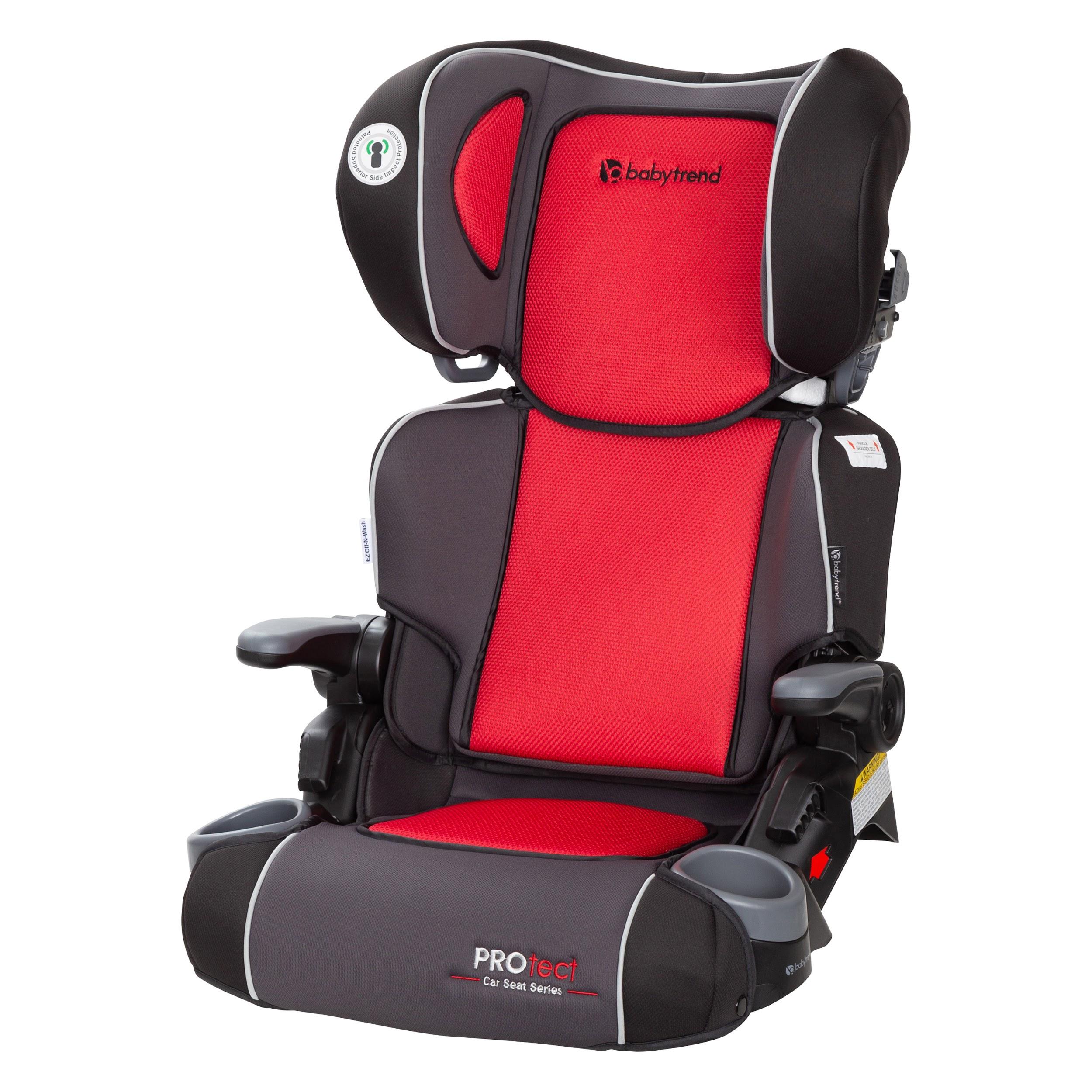Ohio car seat rules are the laws and regulations that are to be followed in Ohio. Car seats are chairs set up in cars for young children. It is coerced for the safety of the children of its country. It is the use of a child restraint system to avoid road accidents.
History of Ohio
Each year in Ohio, thousands of young children passed or were injured in car crashes. Drunk driving and speeding grew so rampant that the introduction of car seat and laws had to be implemented.
Why apply this law?
How many times have you, living in America, heard mentions of death caused by car crashes? More times than you’re proud to admit, I assume. The ratio of the latter cause of demise is by far the largest. This is the reason Ohio car seat laws prioritize the lives of its children. Ohio car seat laws include legal codes that encourage the protection of its young ones. Here’s a graphical representation of the law.
Consequences of the transgression of the law
Breach of the Ohio car seat laws would result in you to pay up a fine of 25 dollars. Extreme disordinance of the law might cause irreversible injury or fatal consequences. After the third offense of the laws in Ohio, you have been sentenced a jail time of 60 days and a $500 fine.
Child Restraint System
The child restraint system is built, especially in accordance with the manufacturing of the vehicle and the physical characteristics of the child. It is dependable on the child’s height, weight, and age. It also includes a booster to reach a standardized height. The seat should also be measured to fit the child. Navigate to the link given for more guidance.
https://www.youtube.com/watch?v=DzjTJ6oSt2g
Requirements for the Ohio car seat laws
Guardians should follow these guidelines. Infants younger than four years and weighing less than 40 pounds should ride in a car safety seat. Children of age 4-8 with a height less than 4ft and 9 inches should ride in a booster seat. A child older than 8 years of age should tightly secure a seat belt while traveling in a car.
Types of car seats
There are many kinds of car seats. They include the rear facing car seat, forward facing seat, and booster seats.
The rear facing car seat
In Ohio, children of age below two should ride in the rear facing car seat. The child should be 40 pounds. Keeping in mind, a one-year-old child can weigh more than an average two year old. In that case of exception, the child should have their own personalized car seats. If so, fasten the child in the forward facing seat.
Types of Rear-Facing Seats:
There are three types of rear-facing seats: rear-facing–only, convertible, and all-in-one. When children reach the highest weight or length, they move on to rear facing a convertible or all-in-one seat.
Rear-facing–only seats
They are used for infants weighing 22 to 35 pounds and 26 to 35 inches. They are small. They have carrying handles. They have a portable base. The base helps in quick installation, so you do not have to reinstall it each time. You can buy more than one base. They are best used for traveling. Avoid using them for other purposes.
Convertible seats
They can be converted to forward facing for older children. They fit your budget by being more useful for a longer period of time. They are heavier. They do not contain bases and are not portable. They have more limits in weight and height than the rear-facing– only seats. More ideal for toddlers. They have a harness.
All in one seat
They are rear facing, forward facing, and belt-positioning booster. They are more long lasting.
They are larger. They also do not have bases. As are they heavier and can not be carried around. They are much popular in Ohio.

The forward facing seat
Car seat law in Ohio states that a child of age outgrows the rear facing car seat. Until he fits into booster seats, secure the toddler into a forward facing seat. Convertible seats are a way to save money as they include rear and forward facing, both.
Types of Forward-Facing Car Seat Restraints
Four types of car safety seats in Ohio are forward facing, which are as follows. Convertible seats are the ones that can be converted easily. Then, integrated seats that are built-in forward-facing seats in some vehicles. They have different weights and heights. Their limits also vary. Last is the travel vests. They are used with lap-only seat belts in the rear for special children.

Booster seats
In Ohio, a child of age 4-7 is fit for booster seats in the car. When the child grows over 4’9ft, he also grows out of his child’s safety seat. After that, are they ready for the seat belt? The booster seat either has a back or is backless, depending on if your car has a headrest or not. The booster seat should also shield the head, spine, and shoulders of the child.

Booster Seat Laws for Ohio
Why the booster seat?
It is a model fit for children of 4 to 7 years old. It helps raise the car seat so that the seat belt attaches. That way, the child’s head, shoulders, and back are protected. Also, it keeps the lap belt over the hip and thigh bone. There is an increment in the certainty of protection by 59 percent.
To upgrade or not to upgrade?
If the car seat has a harness, the booster seat is fit for you. You know when one child outgrows the booster seat. Accordingly, the child has to switch to the front ride seat as booster seat laws Ohio states.
Tips for the booster seat
Children until 13 years old should ride in the booster seat. There are three kinds of booster seats. They are; the high-back seat, backless seat, and the combination. Never use the seat with a lap belt. Keep an eye on your children. Do not let them place the shoulder belt under his arm or behind the back.
Front Ride Seats in Ohio
After the child exceeds 13, he is required by seat laws to sit in the front seat. Provided that he fixes his seat belt. That too, if their ages match the standard height and weight.
Seat belt
Children over 13 years old should wear a seatbelt. In Ohio, the children are considered from infants to 17 years old. However, that does not mean they should no longer wear seat belts. Until whatever age seat belt is vital and a traffic rule to abide by at all cost.
Disregarding children in the car is disregarding the laws.
Leaving a child alone in the car is against the laws in Ohio. Car seat laws for Ohio states negligence of a child is a crime.
Smoking and child passenger safety
There is a law in-making that condemns smoking in the car with children of less than 6 years old. If done so, one is liable to pay a fine of $500. With the next transgression along with a $500, an addition of $250 must be paid. Smoking is anything that contains tobacco in it. Ohio is stringent in this law.
Child Safety Seats
Without any cost, a department in Ohio inspects the seat in your car. They also guide in the installation of the child safety seat. They contribute to recall checks about their products and train other organizations.
Installation Information
To install child safety seats, we attach it through a seat belt or its LATCH system. The latch is the abbreviation for Lower Anchors And Tethers for Children. It is simpler to use. The top tether makes it more secure. It is important, especially for forward-facing seats. They have lower anchors in the backseat.
The LATCH system
Tether anchors are present behind the seat. Visible on the panel in the sedans in the backseat. Also, you can find the tether anchors at the back of the ceiling or floor. Every forward-facing car seat has tethers or connectors, which secure the anchors. The lower anchor weighs 65 pounds, which includes the child and the car seat.
Inspection of car seats
The review is free of charge, and the duration takes 30 minutes. The professional inspects the size, style, and condition of the car seat according to your child’s need.
Guidance to install a car seat
After inspection, they illustrate the authorized way to install the car seat. Before the decided day of the appointment, the guardians should already know the details of the car seat. If the car seat is not safe, they give you a car seat for a time-being until you buy one.
Safety Seat Laws
Inspection Appointments of the Car seat
The staff advises you on the child safety seats, the laws, the appropriate car seat for your child, and how to install it. They also guide you on how to secure your child in a safety seat in the right manner.
Conclusion
In Ohio, guardians should follow the laws. They should protect their children by securing them in child safety seats. If you go against the laws, you will face a financial burden. But also, could you find yourself and your child in physical and psychological harm. You would oppose traffic rules and get charged.

